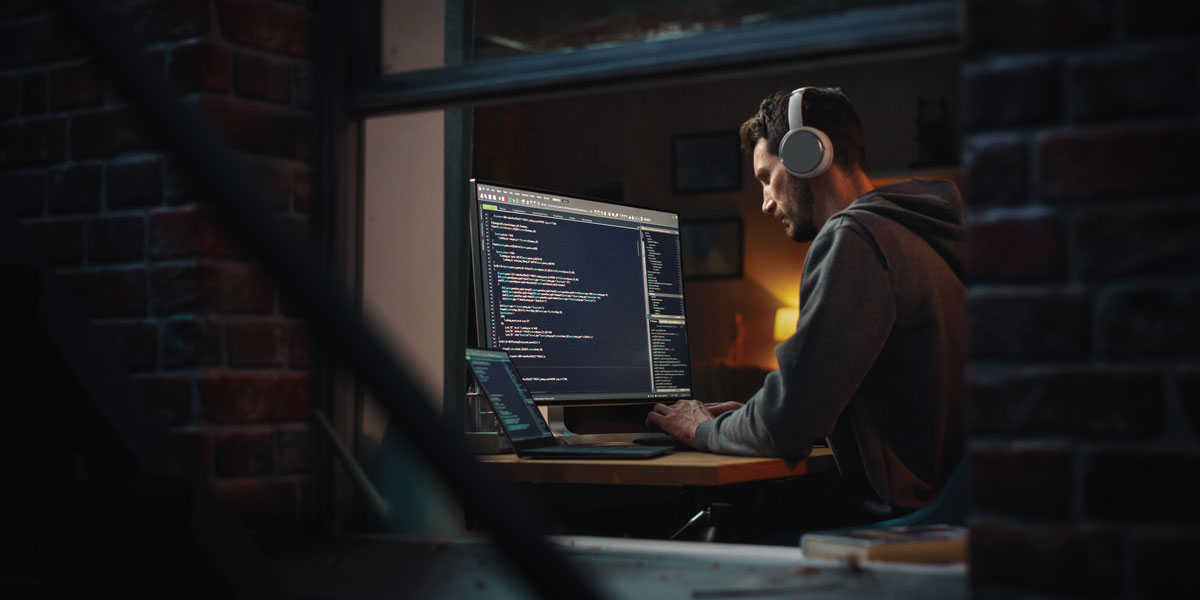The State of Hybrid and Remote Broadcast Post-Pandemic

Posted on Jun 19, 2023 by FEED Staff
Necessity being the mother of invention, remote and hybrid broadcast went through the roof during Covid-19. In this round table, we catch up on how it is developing in 2023, and the challenges that need sorting
Moderated by David Davies | Featuring: John O’Shaughnessy (Dock 10), Guilhem Krier (Panasonic) and Jeremy Miller (Dejero)
David Davies: To what extent do you think the pandemic era has initiated a new stage in hybrid and remote production – and in what ways has this impacted upon your business?
Jeremy Miller: For us it has involved a big move to evolve our equipment in order to deal with a lot of factors, including the reduction of staff on-site and the increased remote capabilities people were asking for, [and how they related to] bandwidth capabilities. As a result, we have added mobile internet capability and gateway modules to our mobile transmitters that allow people to turn them into a well-blended internet connection in the field.
In general, there is a drive for people to do more in the field with less. And I believe [the pandemic] did help to nudge people along to adopt more IP-based workflows.
Guilhem Krier: The last few years have been really interesting. It’s true that three years ago, some of the events continued to happen, but also that people were either not allowed to go to them or were unable to. So it moved from a situation where people attended events and they were shot and broadcast as well, to one where there was a need to film everything that moves and transmit it, basically – whether it be in the corporate world, live events or whatever. People did not want to miss the opportunity to create and transmit content as it was so strongly in-demand.
From our perspective, we sold a lot of PTZ cameras and camcorders. People found it quite easy because the cameras are already supporting the necessary protocols inside and are readily available, so they could start using them for this kind of application. [Suddenly] there was a very big demand for streaming, and that really pushed the remote production story quite fast.
John O’Shaughnessy: It’s fair to say, from our perspective, the pandemic didn’t initiate [the hybrid/remote trend]; we were already down that path. A lot of our production partners had started to demand more remote working from a sustainability perspective. But it did fuel its escalation because of people suddenly not being able to travel.
We have got ten studios and plenty of other facilities, and work with a lot of partners on events all over the world. Our connectivity enables that to happen anywhere, [which resonated with organisations who are now] saying, ‘What do we actually need to send out to a remote location?’ It was a good omen that we were ready to go there when [remote/hybrid production] turned out to escalate so quickly.
[As the pandemic receded] some asked the question about whether the old ways of working would come back, and it’s clear the answer is ‘absolutely not’. People realise the value of not moving so many people around, though there are challenges in delivering those productions.
David Davies: Given that the ‘remote approach’ is here to stay, do you think we should expect an industry-wide period of investment and renewal in order to solidify the new workflows?
John O’Shaughnessy: One of the things we have discovered [concerns the importance] of finding the right balance in how we use our capacities. We have lots of facilities on site, and often when productions require use of those facilities they don’t require them in a simple way. So for us there has [been an impetus to] find a balance between operating that way and then potentially having a local studio sat empty that someone else might want to use, versus the potential complications of adding more remote working.
Another point I would make is that [remote/hybrid production] is enabling more smaller events to be covered. These might be events where they can’t really afford to have huge OB vehicles, or whether the broadcaster might be covering multiple events at the same time. Having a media hub that can switch between various local sources gives so much more flexibility.
So we have a focus on finding a balance between technology and budget, because for [some of the lower-budget productions] there may be a way of compromising in terms of the equipment you need – questions like, can you do the production with fewer cameras? And so on. This is all achievable, although it does mean you have to adapt to every one of the cases. Every project has its own set
of requirements.
Guilhem Krier: When it comes to remote production for us at the moment, it means broadcasting and live events; it’s not [applicable in] the corporate market. But in terms of broadcasting and live events, there is a clear demand growing in this direction. In fact we have been asked by customers to adapt our products further to meet that request. For example, we are now pulling ST 2110 support as well as compressed ST 2110 using JPEG XS direct into cameras. Also, we have PTZ cameras that are natively able to output ST 2110 compressed and uncompressed on top of the ‘usual suspects’ like NDI and SRT. It’s worth noting that SRT is in-demand; people are happy with that protocol judging by the feedback we get.
Jeremy Miller: Yes, customers are ‘gearing up’ for the new ways of working. I also think it’s noticeable that, when you speak to customers, they are used to employing a product in a certain way, but over time – for example, as we have added a 5G product to our EnGo line [of mobile transmitters & internet gateways] – they have also recognised the chance to use these other capabilities, too.
People have alluded to trying to do more with less, and [with regard to what can be achieved] a lot of it comes down to bandwidth constraints and budget. A customer’s budget can be impacted if they are working on a remote site that will charge them an arm and a leg to get the fibre connection they need. But with the cellular structures now in place, it’s possible to give people the bandwidth for a full multicamera shoot in which multiple IP cameras can be plugged into mobile units and rack-mounted gateways.
David Davies: What do you think are the hurdles that are still yet to be overcome if hybridised workflows are to achieve their full potential?
John O’Shaughnessy: It’s a big subject, especially in our world. The productions we deal with – and sometimes [other partners] such as broadcasters or satellite trucks – have all got different requirements. Our role is to be the hub that talks to everyone. We can do that, but it [requires careful planning] in order to accommodate all of the individual requirements and bespoke elements; for example, how the audio and video for a given production connect from a communications point of view.
There can be video and audio delays to manage in the process, [so one specific area we have been] spending time and money on is synchronisation tools. For instance, you can look at multiple cameras and types of signal – HD, 4K and various flavours of that. On a training level, it has added a new complexity with regard to the types of requirements for each person on-site, who may be used to a certain way of doing things.
Obviously there are a lot of freelancers in the industry, so they might have to spend time getting used to the various [remote/hybrid production methodologies].
Jeremy Miller: As John said, you run into a ton of different use cases and equipment wherever you go. For us, it primarily means getting into the IP side of things, but also an inherent transfer of knowledge in which IT is more involved. The conversations can be quite different, but [a consistent theme] is security. People want to ensure they have safe connections, which involves learning about and working with customers and their IT departments closely.
We’ve kicked off remote training sessions both internally and with external customers. We’re teaching people how to implement [these aspects] and getting feedback about features. So there is an impetus to really look at the nitty-gritty detail in order to ensure customers can do what they need to out in the field.
Also, there is definitely a sense [among customers] that they know they have the capability now, so they are asking the question: ‘What else can we do?’ There is a great deal of ingenuity being shown by broadcasters about how they can use remote production to cover more sporting events and so on.
Guilhem Krier: There is an ongoing challenge in terms of [meeting evolving customer requirements]. One thing I would like to add is that we are sometimes stuck between a rock and a hard place. We are supposed to manufacture cameras and not manage workflow aspects, like encoding, that come after the picture is shot. But to stay relevant, there is a need to stick our fingers into that as well. Customers are expecting that.
David Davies: With technologies and techniques evolving at such a rate, would it be fair to predict that this mode of broadcast will remain a ‘moving target’?
John O’Shaughnessy: Absolutely. One of the massive challenges through all of this is that technologies continue to change and standardisation of equipment is really difficult to achieve. Something might be flavour of the month now, but will that still be the case in two years’ time? It’s difficult to say. Plus there are still plenty of people using SDI [despite the rise of IP], so there is a lot of working with partners to accommodate different equipment and interfaces. But that is the broadcast tech world now.
Jeremy Miller: Watching the growth of IT departments at broadcasters has been very interesting, [not least as it has occurred] at the same time as we have been enabling the broadcast side to do more! In terms of 5G on the cellular side, there has been a move to optimise the bandwidth [for broadcast], and now the IT folks are in there, too, so that’s a different dynamic. There is a great deal of focus on how to enable all these workflows and [facilitate as much diversity of production] as you can. It’s constantly evolving.
Guilhem Krier: I concur with John and Jeremy. There are almost as many workflows as there are people using video products! One point I would stress is that [some time ago] we realised we didn’t want customers to adapt to our products any more; we wanted the products to adapt to customers. So having all the features inside to ensure our products tick the boxes is the direction we are going in – then whatever comes up [in terms of new requirements] we assess and implement whenever needed. So, in summary – yes, it’s definitely a ‘moving target’!
Originally published in the Summer 2023 issue of FEED.










